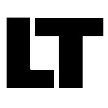Winfried Stürzl
Visual Piano
Fine lines of light scan the walls and condense into moving networks that enclose the viewer like the spatial simulations of a giant computer screen. White, rectangular surfaces replace the lines. At first tiny, then suddenly as high as a man, they flash like strobes in unforeseen places – deforming, inverting, “dancing”. Finally, lines and surfaces merge into pulsating patterns of psychedelic colors and crystalline shapes – leaving the viewer in a veritable frenzy of color after they disappear.
The “visual piano,” a unique instrument worldwide that can be used to create moving (spatial) images of this kind, was conceived and developed by light artist and photographer Laurenz Theinert together with software developers Roland Blach and Phillip Rahlenbeck. A MIDI keyboard makes it possible to generate a wide variety of graphic patterns and project them onto one or more screens using a beamer. Unlike common VJ software and hardware, the spontaneous, dynamic “light drawings” here are not based on stored clips: every moment of the performance is played and modulated live and in real time via keyboard and pedals.
While Theinert initially projected his light drawings frontally onto a screen, 360° projection technology now allows him to extend the viewer’s visual experience into the spatial. The intensification of the visual experience is astounding: the fixed points of the darkened real space are replaced by large and moving structures of light; the viewer is immersed in a completely new cosmos of moving lines, surfaces, and colors.
While in the frontal performances reminiscences of Constructivist painting and other concrete positions in art history were unmistakable, architectural and technical associations now come to the fore. It is not for nothing that one feels reminded of computer-generated 3D simulations or laser beams when looking at the moving lines. The symmetrical structure of the projection also gives rise to crystalline forms that are reminiscent of Art Deco design principles or the utopian designs of Expressionist architecture – such as the Glass Chain – while at the same time citing the aesthetics of the 1960s in their psychedelic colors.
Appearance and aspiration go hand in hand here. The serious exploration of contemporary artistic strategies in dealing with the abstract-immaterial medium of light is deliberately close to – sophisticated – entertainment in the “visual piano” performances.
